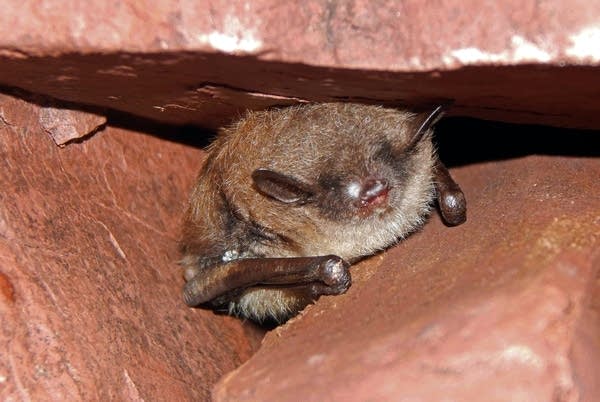Disease that kills bats confirmed at Minnesota state park

A bat in the Soudan Underground Mine State Park in northeastern Minnesota showing signs of white-nose syndrome, a disease that is harmful and usually fatal to hibernating bats.
Christine Salomon | University of Minnesota
Go Deeper.
Create an account or log in to save stories.
Like this?
Thanks for liking this story! We have added it to a list of your favorite stories.


